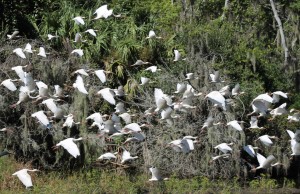 I live on Lady’s Island, adjacent to Beaufort across the Beaufort River. On the other side, across a bit of salt marsh, is St. Helena, a somewhat larger island which, before the Civil War, was a slave plantation.
I live on Lady’s Island, adjacent to Beaufort across the Beaufort River. On the other side, across a bit of salt marsh, is St. Helena, a somewhat larger island which, before the Civil War, was a slave plantation.
The main, not to say only, town on St. Helena is Frogmore. Everyone here is very proud of Frogmore. The local (though very small) airport is affectionately called “Frogmore International”, and several local businesses give Frogmore as their address. Not many years ago you could have addressed a letter via Frogmore, SC, but no more. Now the post office is just St. Helena.
There are a couple of explanations for that.
My brother says that because St. Helena was a slave island, the Gulllah population there felt “Frogmore” was demeaning and asked that it be changed.
I recently heard another explanation, which frankly, I think is the more likely. Just off the coast of St. Helena is Dawtaw Island, a comparatively new community for rich people. Not as well known as Hilton Head, but posh nevertheless. According to my friends at Hardee’s, the residents of Dawtaw felt uncomfortable having their mail addressed to Frogmore. Not elegant enough. So, it was they who pressed for the name change.
That really makes more sense to me. The Gullahs are actually very proud of their heritage, whereas I knew some nouveau-riche in Owen County who objected to having their rural address “Dog Kennel Road.”
One of the culinary delights of this area is “Frogmore Stew”, utilizing the shrimp for which the area is known, corn on the cob, sausage and depending on who is doing the cooking, potatoes. It takes about 15 minutes to cook. It is also known as Low Country Boil, and has made its way onto menus at such places as Cracker Barrel. If you have ever eaten it there, don’t be put off. Frogmore Stew/Low Country Boil is made to be eaten as soon as it cools.
The author of some very good mysteries set in this area apparently didn’t know that, as at one point she has her heroine make Frogmore stew and cook it for hours. It would actually be inedible at that point. She was probably misled by the word “stew”.
My nephews make great Frogmore stew. I wish you all could taste it!










